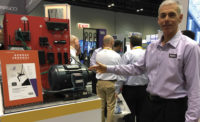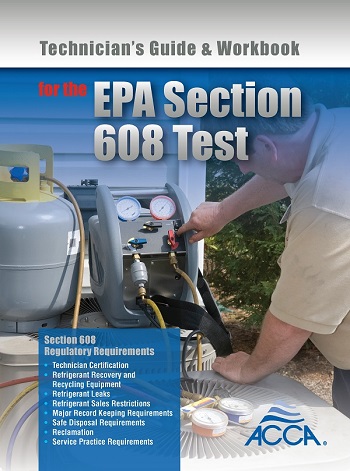The commercial refrigeration market is diverse, spanning a number of applications, including food service; food and beverage production; retail, supermarkets, and convenience stores; and more. And demand for equipment is growing. According to a study from the Freedonia Group, U.S. demand for commercial refrigeration equipment is forecast to increase 3.1 percent annually through 2020 to $11.3 billion, moderating from the 2010-2015 period, when growth was bolstered by a rebound in sales after the economic recession.
“I believe our industry has lagged behind in terms of technology, innovation, and advancement for a long time, but now it seems to be really happening,” said Mike Nohle, refrigeration division manager, Meier Supply Co. Inc.
Nohle identified three main trends in the market: increasing use of electronics, wider application of electronically commutated motor (EMC) technology, and increased use of electronic refrigerant specialty valves.
“Those are three areas that are really growing in breadth of product and customer awareness,” he said. “In terms of electronics, there is more commercial refrigeration equipment with on-board electronics for system control. Another part of that is intelligent defrost, you might even say ‘smart’ defrost, which is a big energy saver. There are also more features on the electronics side for networking commercial refrigeration equipment with building management systems.”
The other big trend for the industry is new refrigerant solutions as a result of the U.S. Environmental Protection Agency’s (EPA's) Significant New Alternatives Policy (SNAP) program, Nohle noted.
“We’re noticing this trend now because we have a cutoff date of Jan. 1, 2018, after which we can no longer sell systems utilizing R-404A and R-507, which are really specific to the commercial refrigeration and food preservation segment. The new refrigerants are called hydrofluoroolefins or HFOs.”
Refrigeration Reform
All current trends in the commercial refrigeration market relate in some way, shape, or form to energy use and the environment, which have been driven for several years by the EPA and the U.S. Department of Energy (DOE) as well as Natural Resources Canada, according to John Murray, executive vice president and national sales manager, National Refrigeration and A/C Canada Corp., KeepRite Refrigeration.
“These trends have remained fairly consistent since legislative framework began almost 10 years ago,” Murray said. “Much of the legislation that impacts what we do every day has not been finalized. The current EPA SNAP program covering which refrigerants we can (and can’t) use is on hold. And the latest DOE energy performance rules don’t unfold completely until 2020. In the simplest terms, we are just beginning to implement the energy-saving technologies required to meet the new energy factors written into law. We know pretty well what our engineering project priorities need to be in the foreseeable future.”
Jonathan Tan, director of business development, Hillphoenix, a Dover company, said the biggest trend he is seeing in the market is uncertainty.
“With the Jan. 1, 2020, cutoff date of R-22, there are still a large number of grocers who have not converted,” he said. “The question then begs, what do they convert to? Depending on the size and location of a store, a gas conversion may cost as little as $50,000 to $60,000 up to $100,000 or more. This expense is more than the cash outflow but also includes the downtime, coordination, and aftercare of the system to ensure proper operation. After this is said and done, the conversion gas is chosen for a project. But how long will it be before that gas is targeted for elimination? The last thing a customer wants to do is invest in something that is only a short-term solution.
“The California Air Resources Board is telegraphing requirements for new systems to be less than 150 GWP [global warming potential] by 2025,” Tan continued. “How does this impact regulation for the balance of the country and does it bleed into gas conversions or store remodels? Many customers are ‘banking’ their own gas while they convert on an ‘as needed’ basis. Basically, they are saving their own gas to allow them to limp along until the regulatory climate becomes clearer. Lastly, the recent court ruling on R-404A and other high-GWP refrigerants has delayed action on the phasing out of these refrigerants. Again, it’s another point of uncertainty in the market.”
Tan said there was an initial large push to convert R-22 back in 2010, when the first production restrictions were put into place and no new equipment could be installed that utilized R-22.
“This was driven mostly by speculation on the price of R-22,” he noted. “Grocers with a number of locations seemed to jump out to get ahead of regulation [and future refrigerant price increases] and start banking their now-excess refrigerant to support the balance of their stores. As the price of R-22 increased and the speculation on various refrigerants increased, I believe the initial push to convert waned — especially for those with the luxury of large caches of reclaimed gas. Eight years later, virgin R-22 may be had in the $20 per pound range give or take. This represents more than a 20 percent CAGR [compound annual growth rate] since 2010. With regulatory uncertainty and dwindling R-22 reserves, some retailers are looking at a large expense to convert the balance of their stores. Which leads us to the present – what will refrigerant prices look like after Jan. 1, 2020? Additionally, many retailers converted their R-22 stores to R-404A, which subsequently became targeted for phaseout. Depending on the finality of the recent court’s ruling, what will happen to the next bank of targeted refrigerants?”
Planning For Future Success
No matter where the industry turns, wholesalers need to stay educated on the trends and regulations.
“Wholesalers need to keep abreast of the most current legislative activity and terminology,” Murray said. “They should become even more familiar with floating head system designs and variable-speed motor technology, including ECMs, enhanced heat exchanger designs, electronic expansion valves, subcooling, demand defrost, and anything else that can improve system energy performance. What their future inventory looks like will be vastly different in the very near future.
“Energy and the environment will continue to drive nearly everything we do,” he continued. “The commercial refrigeration industry plays an important role in making life better for everyone who follows in our footsteps. Designing our equipment for reduced energy consumption and to improve the environment will help make the world a better place for future generations.”
Tan said wholesalers have an opportunity to become experts in the commercial refrigeration area.
“They can advise their customers, whether they are contractors, retailers, or other, on the most up-to-date information, such as pending action by the EPA and/or any local or state regulations,” he noted. “As a native Californian, I often have a skewed sense of where regulation is going. The common belief is if the state of California is doing something today that soon it will migrate to the federal level or to other states. The reality is, the rate of conversion is always hard to predict. Good wholesalers should know their respective markets and be able to provide the best information. For retailers, gas changeouts are 100 percent an expense. Some may argue it is expense avoidance to ensure regulatory compliance, but at the end of the day, this directly impacts the grocer’s earnings before interest and tax (EBIT) in a negative way. This is the reason for all of the current uncertainty.”
Tan said the current trends, such as an increase in design and implementation of natural refrigerant systems like CO2 and the addition of doors on all cases with the exception of wet produce, will continue to permeate the market.
“Having doors on most everything reduces the total load and thus results in a smaller system, smaller refrigerant charge, and cheaper installation costs,” he said. “The upfront equipment costs are higher, but this future-proofs the business. Instead of being a future expense to convert to yet another alternate refrigerant, it provides a positive net present value for the retailer. There is speculation on increasing the charge limit of 150 grams for flammable natural refrigerant systems. This will increase the viability for these systems.
“Additionally, I will use some industry jargon, but micro-distributed systems will have a play over the next five years as well,” he continued. “These systems are similar to existing self-contained units but have a common fluid cooler presumably on the roof with a shared water loop to each respective case or lineups’ condenser. As a note, the Sacramento Municipal Utility District recently launched what I believe to be the first utility-level incentive to promote installation of natural refrigerant systems, specifically targeting the reduction of greenhouse gas emissions. Lastly, it’s all about training. We have an industry shortage for technicians today with traditional systems. As alternate systems become more and more prevalent, the need for trained technicians will only grow.”
Nohle agreed with Tan and Murray’s assessments of wholesalers, saying they need to embrace the trends.
“We need to study them so we can be the information source for contractors,” he said. “That’s one way we as wholesalers can add value. We sort of watch and track these trends and then share the information with our customers.”
Nohle sees these new technologies taking over the market over the next few years.
“It’s going to become the standard of the industry instead of an upsell or upgrade option,” he said. “A lot of that is because of the necessity of manufacturers to improve energy efficiencies due to DOE energy usage reduction regulations. On the refrigerant side, the EPA is the driver with its SNAP program.
“I believe there will be, for lack of better words, a weeding out of some of the contractor base that is not able to play with these new technologies,” Nohle continued. “Those that get on board with new technology are going to have greater success than those that don’t. The real benefit of all of this is greater energy savings, expanded communications, and greater reliability of equipment. Also, on the environmental side, I believe it is prudent that we support steps being taken to protect our environment, and both the DOE and EPA regulations do that. There are plenty of challenges that go along with all that, but boiling it down, I think it’s a good thing for our industry.”














Report Abusive Comment